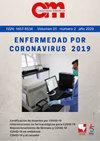哥伦比亚卡塔赫纳孕妇中耐甲氧西林金黄色葡萄球菌鼻腔和阴道定植
IF 1.3
4区 医学
Q3 MEDICINE, GENERAL & INTERNAL
引用次数: 8
摘要
简介:金黄色葡萄球菌(SA)的寄主生态位在鼻腔前部;然而,最近有报道称,孕妇阴道定植率在14%至17.1%之间,这引起了人们对产后妇女和定植母亲的新生儿的潜在风险的关注。目的:确定在哥伦比亚卡塔赫纳一家妇产医院就诊的孕妇鼻腔和阴道定植SA的流行情况以及分离株的抗生素敏感性。方法:从参与者的鼻腔和阴道拭子进行微生物和分子分析。出院后随访长达四周。结果:在纳入研究的100名孕妇中,34人被SA定植;29只在鼻腔,3只在阴道,两个部位都有。孕妇SA在鼻腔的定植比在阴道或两个部位的定植更常见[29/34(85.3%)比3/34(8.8%)和2/34 (5.9%);p < 0.05)。共分离出36株SA,其中耐甲氧西林金黄色葡萄球菌(MRSA) 9株(25%),1株来自阴道;因此,MRSA在孕妇中的总体定殖率为9%。分子分析表明,阴道MRSA、鼻腔MRSA和2株金黄色葡萄球菌(MSSA)分离株携带pton - valentine leukocidin (PVL)基因。2株MRSA携带SCCmec I型,7株携带SCCmec IV型。结论:研究人群中SA的鼻腔定植率与先前报道相似。然而,MRSA鼻腔定植的频率较高,而SA阴道定植的频率低于先前在类似人群中报道的其他研究。获得的MRSA分离株显示出社区概况。本文章由计算机程序翻译,如有差异,请以英文原文为准。
Nasal and vaginal colonization of methicillin-resistant Staphylococcus aureus in pregnant women in Cartagena-Colombia
Introduction: The host niche for Staphylococcus aureus (SA) are the anterior nares; however, vaginal colonization rates between 14% and 17.1% in pregnant women have been recently reported, raising interest about the potential risk in postpartum women and in neonates from colonized mothers. Objectives: To determine the prevalence of nasal and vaginal colonization of SA and the antibiotic susceptibility of the isolates in pregnant women attending a maternity hospital in Cartagena, Colombia. Methods: Nasal and vaginal swabs were obtained from participants and subjected to microbiological and molecular assays. A post discharge follow-up was performed for up to four weeks. Results: From 100 pregnant women enrolled in the study, 34 were colonized with SA; 29 only in the nares, three only in the vagina, and two at both sites. Colonization of pregnant women with SA was more common in the nares than in the vagina or at both sites [29/34 (85.3%) vs 3/34 (8.8%) and 2/34 (5.9%); p<0.05]. We obtained 36 SA isolates, nine (25%) of which were methicillin-resistant Staphylococcus aureus (MRSA), one was from the vagina; thus, the overall MRSA colonization rate among pregnant women was 9%. Molecular analysis showed that Panton-Valentine leukocidin (PVL) genes were carried by the vaginal MRSA, seven of the nasal MRSA, and two of the Methicillinsensitive Staphylococcus aureus (MSSA) isolates. Two MRSA isolates carried SCCmec type I and seven carried SCCmec type IV. Conclusions: Nasal colonization rate for SA in the study population was similar to previous reports. However, the frequency of nasal colonization of MRSA was higher while vaginal colonization of SA was lower than previously reported in other studies for similar populations. The MRSA isolates obtained showed a community profile.
求助全文
通过发布文献求助,成功后即可免费获取论文全文。
去求助
来源期刊

Colombia Medica
MEDICINE, GENERAL & INTERNAL-
CiteScore
2.00
自引率
0.00%
发文量
11
审稿时长
>12 weeks
期刊介绍:
Colombia Médica is an international peer-reviewed medical journal that will consider any original contribution that advances or illuminates medical science or practice, or that educates to the journal''s’ readers.The journal is owned by a non-profit organization, Universidad del Valle, and serves the scientific community strictly following the International Committee of Medical Journal Editors (ICMJE) and the World Association of Medical Editors (WAME) recommendations of policies on publication ethics policies for medical journals.
Colombia Médica publishes original research articles, viewpoints and reviews in all areas of medical science and clinical practice. However, Colombia Médica gives the highest priority to papers on general and internal medicine, public health and primary health care.
 求助内容:
求助内容: 应助结果提醒方式:
应助结果提醒方式:


